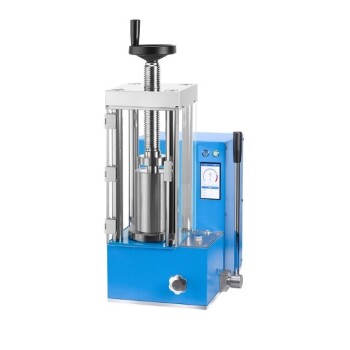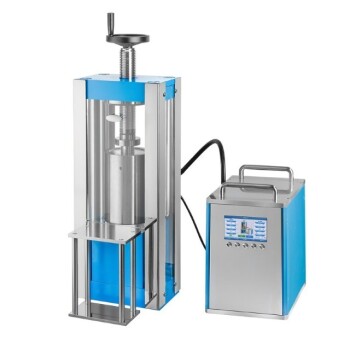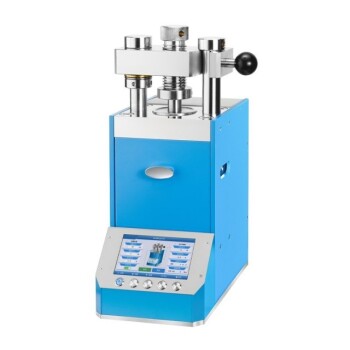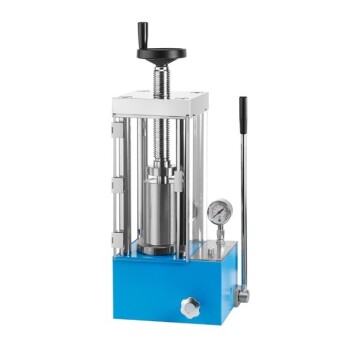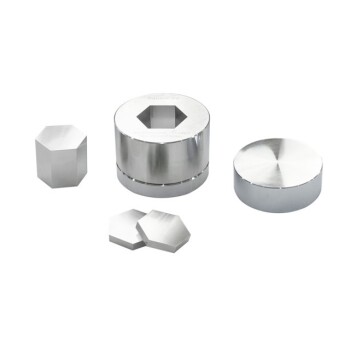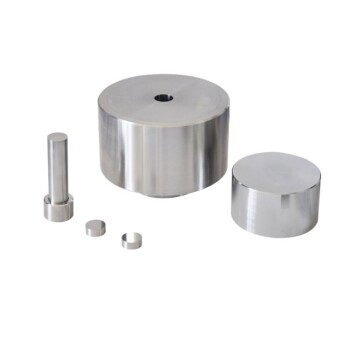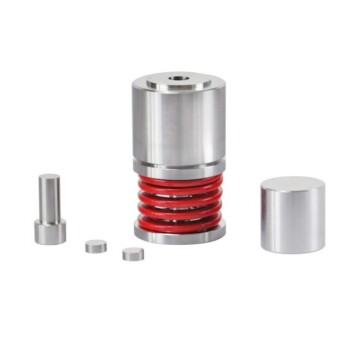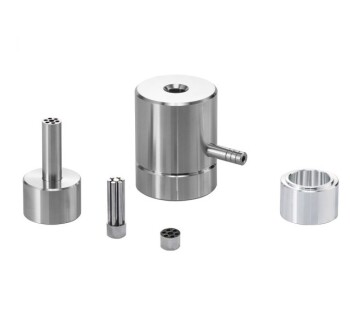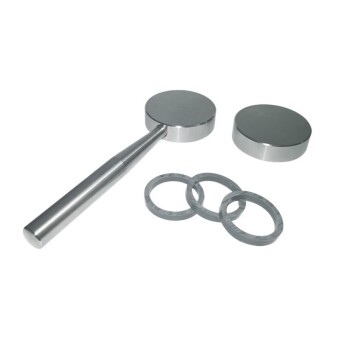In short, Cold Isostatic Pressing (CIP) produces a material with fine grains. This grain refinement occurs because the intense, uniform pressure applied during the process causes plastic deformation and recrystallization of the powder particles. The result is a denser, pre-sintered body with a significantly improved internal structure.
While Cold Isostatic Pressing is fundamentally a powder compaction method, its true value lies in how it re-engineers the material's microstructure. The application of uniform, high pressure creates a fine-grained structure that is the direct cause of enhanced strength and toughness in the final component.
How CIP Achieves Uniform Compaction
The Basic Process
Cold Isostatic Pressing involves placing material powder into a flexible, sealed mold. This mold is then submerged in a chamber filled with a liquid, typically water. An external pump pressurizes this fluid, exerting equal pressure on the mold from all directions.
The Power of Isotropic Pressure
Unlike traditional uniaxial pressing, which compresses material from only one or two directions, CIP's pressure is isotropic, or uniform from every angle. This eliminates the internal stresses and density gradients common in other methods.
This uniformity removes constraints on part geometry, allowing for the compaction of highly complex shapes with consistent density throughout the component.
The Mechanism of Grain Refinement
Plastic Deformation at the Particle Level
The immense pressure—often tens of thousands of PSI—forces the individual powder particles against each other. This energy causes the particles to change shape, or plastically deform, which closes the voids between them and dramatically increases the density of the component.
Recrystallization Under Pressure
This intense deformation imparts a high amount of strain energy into the material's crystalline structure. The material relieves this internal strain through recrystallization, a process where new, smaller, strain-free grains nucleate and grow.
This process effectively replaces the original, potentially larger grains of the starting powder with a new, much finer grain structure throughout the compacted part.
Why Fine Grains Matter for Performance
Enhanced Strength and Toughness
A fine-grained structure is a hallmark of a high-performance material. The increased number of grain boundaries acts as an obstacle to dislocation movement, which is the primary mechanism of material failure. This makes the material significantly stronger and more resistant to fracture.
Improved Consistency and Reliability
Because the pressure is applied uniformly, the resulting fine-grained microstructure is homogenous throughout the part. This means the material's mechanical properties are consistent and predictable, regardless of the direction in which they are measured.
Understanding the Trade-offs
Tooling and Equipment
CIP requires a specialized high-pressure vessel and flexible molds (often made of urethane or rubber). This equipment can be more complex and represent a higher initial investment compared to a simple mechanical press.
Not a Final Processing Step
CIP produces a "green" part, which has high density and a refined grain structure but typically requires a subsequent thermal treatment, such as sintering. This final step is necessary to bond the particles and achieve the material's final strength and density. The fine grains from CIP, however, can make the sintering process more efficient.
Making the Right Choice for Your Goal
By understanding how CIP influences microstructure, you can select the right process for your specific needs.
- If your primary focus is maximum strength and toughness: CIP is an exceptional choice, as its inherent mechanism of plastic deformation and recrystallization directly produces a desirable fine-grained structure.
- If your primary focus is producing complex parts with uniform density: The isotropic pressure of CIP is superior to uniaxial methods, preventing weak points and enabling geometries that are otherwise impossible to compact effectively.
- If your primary focus is high-volume production of simple shapes: Traditional uniaxial pressing might be a more economical choice, as long as its limitations on density uniformity and shape complexity are acceptable for the application.
Ultimately, mastering the relationship between the CIP process and grain structure allows you to engineer superior material properties from the very start of your manufacturing workflow.
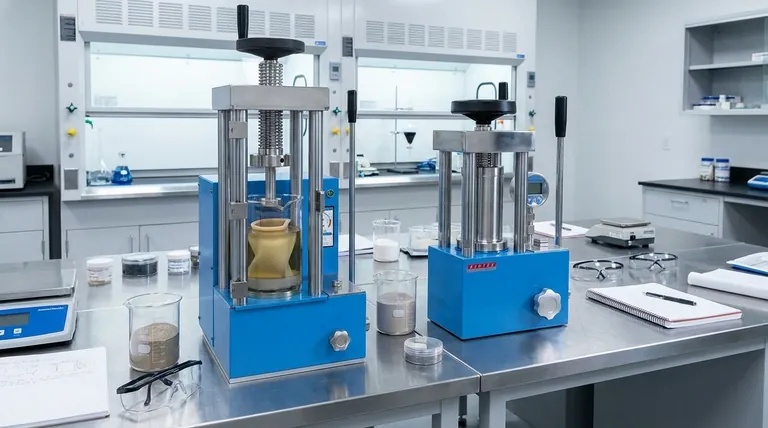
Summary Table:
| Aspect | Effect on Grain Size |
|---|---|
| Plastic Deformation | Compacts powder particles, closing voids and increasing density |
| Recrystallization | Forms new, smaller, strain-free grains, replacing original structure |
| Result | Fine-grained microstructure for improved strength and toughness |
Enhance your lab's material performance with KINTEK's advanced lab press machines! Our automatic lab presses, isostatic presses, and heated lab presses deliver precise control for fine grain refinement, boosting strength and consistency in your components. Perfect for laboratories focused on superior material properties. Contact us today to discuss your needs and see how our solutions can benefit your research and development!
Visual Guide

Related Products
- Electric Lab Cold Isostatic Press CIP Machine
- Electric Split Lab Cold Isostatic Pressing CIP Machine
- Automatic Lab Cold Isostatic Pressing CIP Machine
- Manual Cold Isostatic Pressing CIP Machine Pellet Press
- Lab Polygon Press Mold
People Also Ask
- What industries benefit from Cold Isostatic Pressing technology? Ensure Reliability in Aerospace, Medical, and More
- What are the advantages of Cold Isostatic Pressing for ceramic production? Achieve Uniform Density and Complex Shapes
- What are the two main techniques used in cold isostatic pressing? Wet-Bag vs. Dry-Bag Methods Explained
- What is the historical background of isostatic pressing? Discover Its Evolution and Key Benefits
- What are the advantages of uniform density and structural integrity in CIP? Achieve Superior Performance and Reliability
